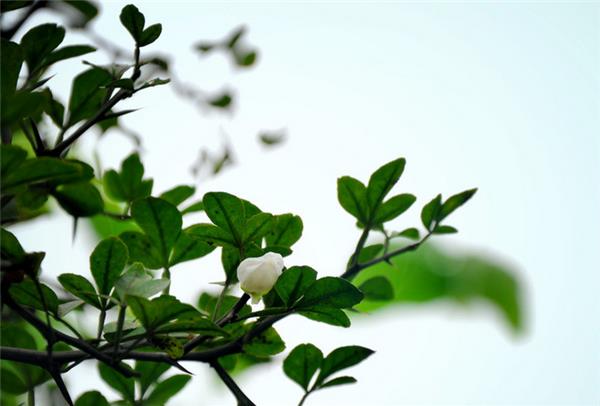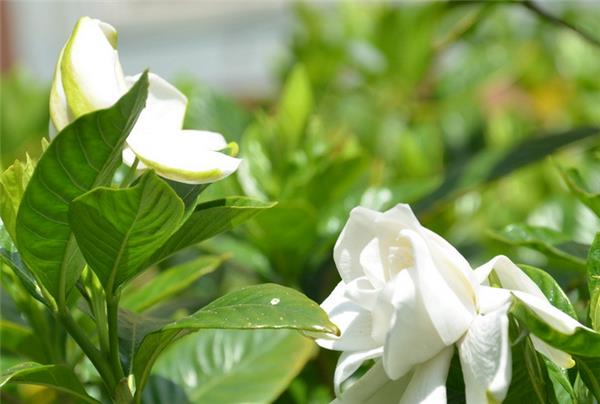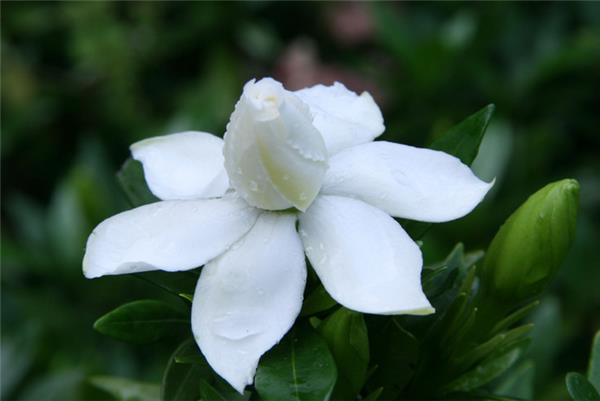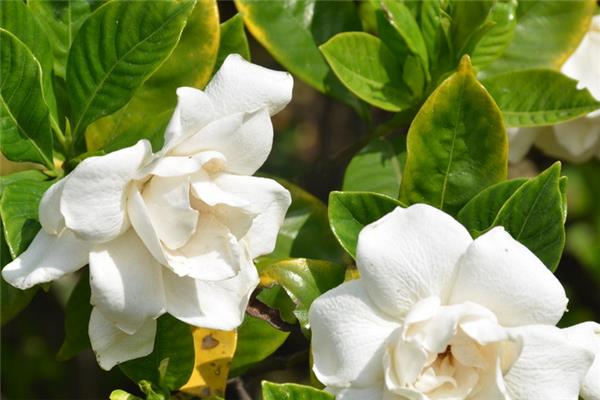[gardenia yellow leaves] what about gardenia yellow leaves?
Many flower friends who raise gardenia will encounter the situation of gardenia leaves yellowing, but it is difficult to solve the problem pertinently. Although the yellowing diagram of gardenia leaves collected by flower friends can not be 100% correct, but it has good reference value.

What about the yellow leaves of gardenia
1. The factor of improper moisture.
Gardenia planting process watering too much, then the young leaves will be dull, the old leaves will not be affected, but the leaves will be yellowish green, the new leaves are not long, the solution is: put the flowers out of the pot in a cool, ventilated place and then put them back into the basin. When there is lack of water, the tip or edge of the leaf is withered and dry, the old leaf is withered and yellow from the bottom up, and the growth of the new leaf is relatively normal, so it should be fully watered and thoroughly watered.
2. The factors of improper illumination.
Excessive light leads to macula on the illuminated side of the leaves, which can be restored in a dark place. if the gardenia flower is placed in a shady environment for a long time, then the leaves will turn yellow or fall off because they do not get enough sunlight. It's best to replenish the light right away.
3. The factors of improper fertilization.
Gardenia planting process should pay attention to fertilization, too much or too much concentration is easy to cause plant yellowing, new leaf tip will appear brown, general leaf hypertrophy and no luster, and concave and convex does not stretch, old leaves scorched yellow fall off. At this time, we should irrigate more and reduce the concentration of soil fertilizer. Lack of fertilizer will also cause plant yellowing, but the lack of nutrients in the plant is different, showing different symptoms.

II. Conservation methods of Gardenia jasminoides
1. Do a good job in breeding. We know that the reproduction of gardenia can be divided into sexual reproduction and asexual reproduction.
Sexual reproduction: generally choose full, crimson ripe fruit, shell or dry as seeds, before sowing, cut the pericarp of the seeds with scissors, dig out the seeds, rub them in hot water, remove floating seeds or impurities, and then fish out the sunken full seeds.
Asexual reproduction: cuttings can be divided into spring and autumn, cuttings select 2-3-year-old branches with healthy growth, intercept 10-12 cm, cut off the lower leaves, the top two leaves can be retained and cut off half of each, first dipped in vitamin B12 injection, and then obliquely inserted in the bed, leaving only one section above, pay attention to shade and maintain a certain humidity, transplant or pot a single plant when rooting seedlings begin to grow.
2. There are special points to pay attention to in nursing gardenia at ordinary times.
Give it an acidic environment. The content of soil, water and fertilizer all made the plant unable to absorb iron, but affected the formation of chlorophyll, withered branches, scorched leaves, and even died. To use fertile, loose, well-drained acid soil, such as pine sawdust thoroughly mixed into the soil, the use effect is also very good.

III. Gardenia varieties
1. Gardenia jasminoides: also known as Gardenia jasminoides: cultivated varieties, large leaves, large flowers and rich fragrance, double petals, no fruit.
2. Gardenia jasminoides: short plant, small flowers, small leaves, double.
3. Gardenia jasminoides: also known as gardenia jasminoides, sparrow tongue flower. The plant is short and prostrate, the leaves are small, narrow and long, oblanceolate. The flowers are also small and fragrant. The flower is double.
4. Yellow Gardenia: also known as Gardenia jasminoides, is a wild species of Gardenia jasminoides. Small leaves, single flower, orange-red fruit in autumn, not withered for a long time, and strong resistance, so it is a good tree species for flower and fruit viewing.
5. Egg leaf Gardenia jasminoides: leaves Obovate, apex round.
6. Gardenia jasminoides: narrow leaves, wild in Hong Kong.
7. Gardenia jasminoides: the leaves are striped. Alias: Gardenia jasminoides, Gardenia jasminoides, Fructus Gardeniae, Rubiaceae.
8. Leaflet Gardenia jasminoides: evergreen shrub, plant short, branches spreading, leaves narrow, oblanceolate, opposite or tricuspidate, stipules membranous sheathlike, flowers smaller solitary in leaf axils or branches, calyx tube angled, Corolla dish-shaped, white, double, fragrant; fruit ovate, with 6 longitudinal edges.

In addition to ornamental gardenia, its flowers, fruits, leaves and roots can be used as medicine, which has the effect of purging fire, removing annoyance, clearing heat and diuresis, cooling blood and detoxification. Simple leaves opposite or 3-leaf whorled, leaf blade Obovate, leathery, emerald green and glossy. Berries ovate, yellow or orange. Like warm, humid and sunny environment, more cold-resistant, gardenia resistant to semi-shade, afraid of stagnant water, require loose, fertile and acidic sandy loam, like the environment with sufficient light and good ventilation, but avoid strong light exposure.
Related
- Wuhan Hospital Iron Tree Blooming Result Was Instantly Frightened by the Gardener Master
- Which variety of camellia is the most fragrant and best? Which one do you like best?
- What is the small blue coat, the breeding methods and matters needing attention of the succulent plant
- Dormancy time and maintenance management of succulent plants during dormancy
- Minas succulent how to raise, Minas succulent plant pictures
- What are the varieties of winter succulent plants
- How to raise succulent plants in twelve rolls? let's take a look at some experience of breeding twelve rolls.
- Attention should be paid to water control for succulent plants during dormant period (winter and summer)
- Watering experience of twelve rolls of succulent plants
- Techniques for fertilizing succulent plants. An article will let you know how to fertilize succulent plants.



